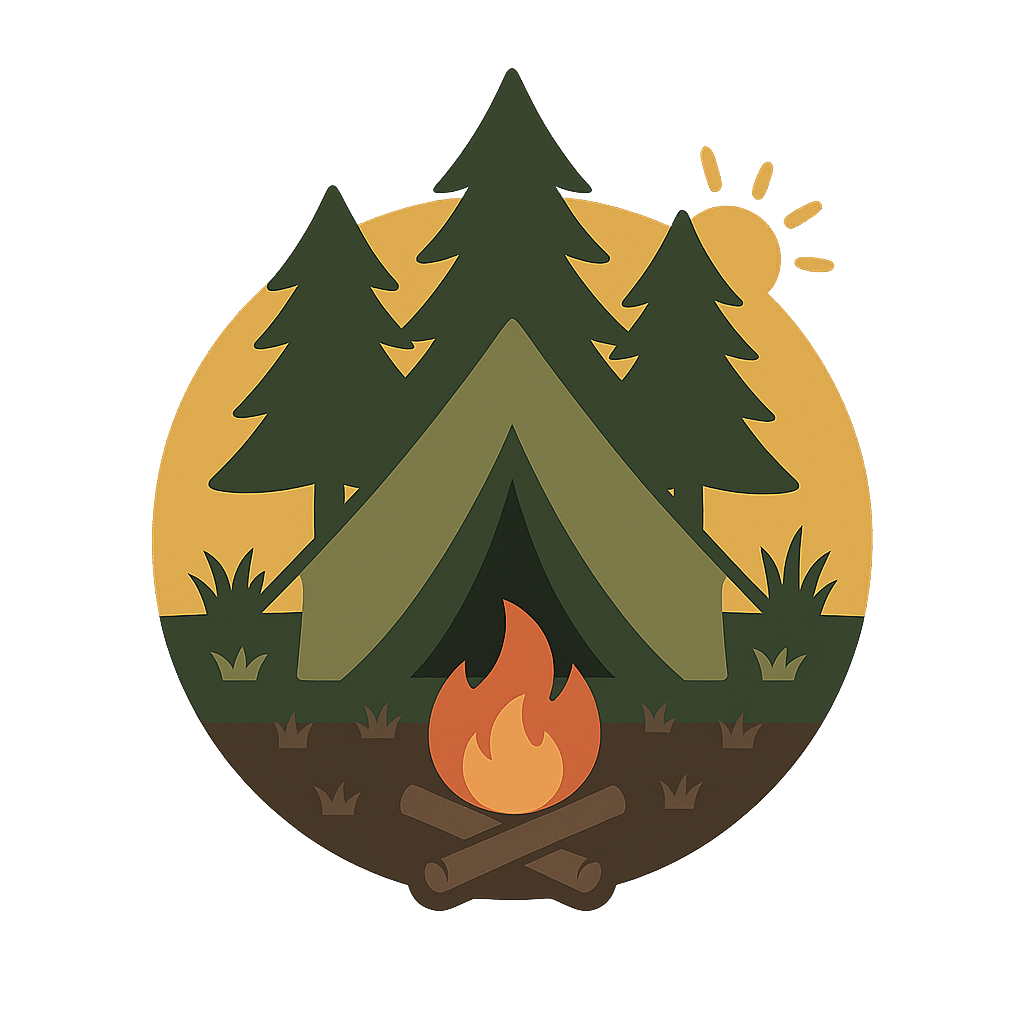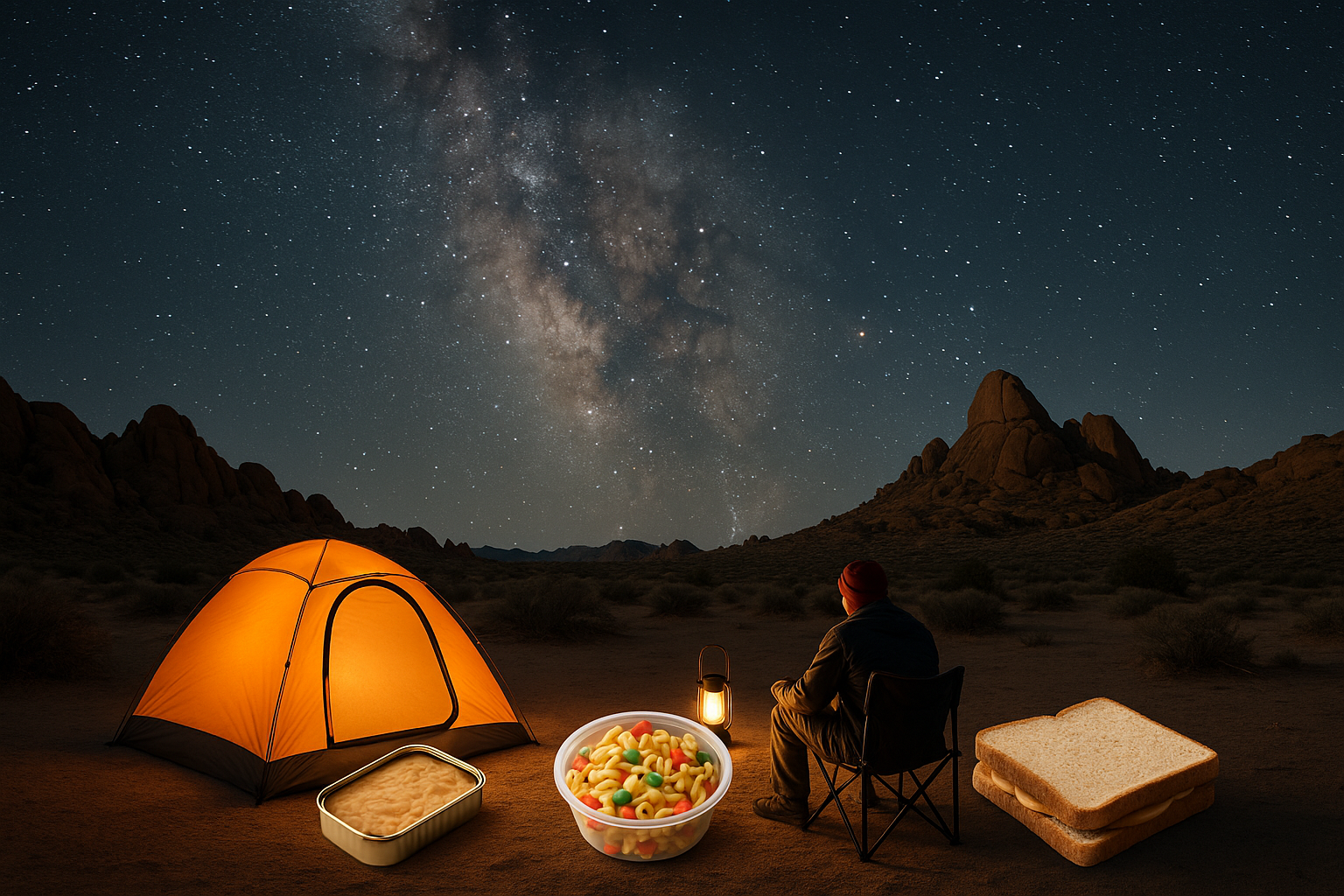When you’re camping in the desert, nighttime flips the script. The sun may have torched you all day, but once it dips, the cold can hit like a sucker punch. No fire? No stove? No problem. What you eat at night can literally regulate your body temperature, keep your hydration levels stable, and help you survive both the heat retention battle and the cold-front ambush.
Most blogs talk about trail mix and jerky. We’re going deeper—real-world no-cook meals that aren’t just about fuel. They’re about thermoregulation, hydration efficiency, and energy conservation in one of the world’s most unforgiving environments.
Let’s break down the best no-cook meals for desert camping at night, designed to keep you alive without overheating or freezing.
🍴 Why You Shouldn’t Cook at Night in the Desert
Before we dive into the meals, here’s why cooking in the desert after sundown is often a mistake:
- Heat dissipation is slow: Your body is still releasing excess heat from the day. A hot meal can spike internal temperature and dehydrate you faster.
- Fuel evaporation is faster: Many camp stoves lose pressure or efficiency in rapid temperature drops.
- Fires draw attention: Not just from people—but from animals and insects.
- Condensation risk: Boiling water at night can release moisture into your shelter, freezing by early morning.
So the answer? No-cook meals that actively help you stabilize, not just “fill you up.”
🥶 Meal Goal 1: Retain Body Heat Without Overheating
You’d think eating cold food means freezing more—but it depends on what you eat. The goal is to support your metabolic warmth without pushing your body into an artificial heat spike that backfires later.
🥣 1. High-Fat Nut Butters with Dried Fruit
A spoonful of almond butter with dried apricots gives you long-burning fat and natural sugars. The body metabolizes fat slowly, generating a gentle warming effect over time—like building an inner fire instead of striking a match.
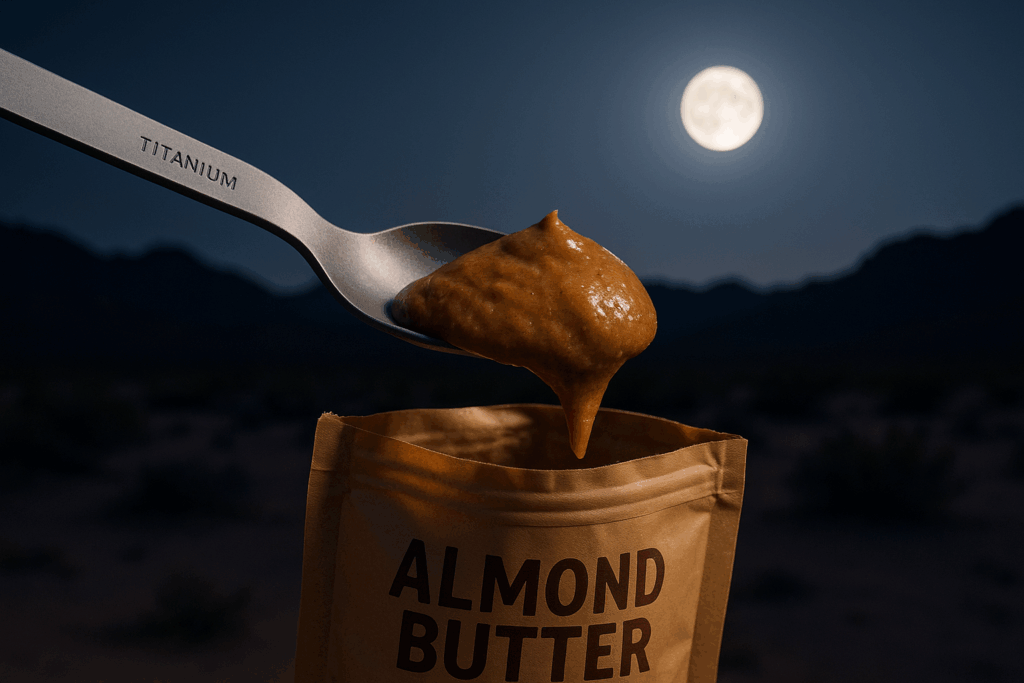
Bonus: The apricots help restore potassium lost from daytime sweating without needing salt tabs.
🧀 2. Hard Cheese + Salami Wraps in Tortillas
The classic trio—protein, fat, and carbs. A wax-coated cheese, shelf-stable cured salami, and a tortilla give you everything your body needs to stay warm without spiking insulin or body heat. Wrap it up and eat it slowly while bundled in your sleeping bag.
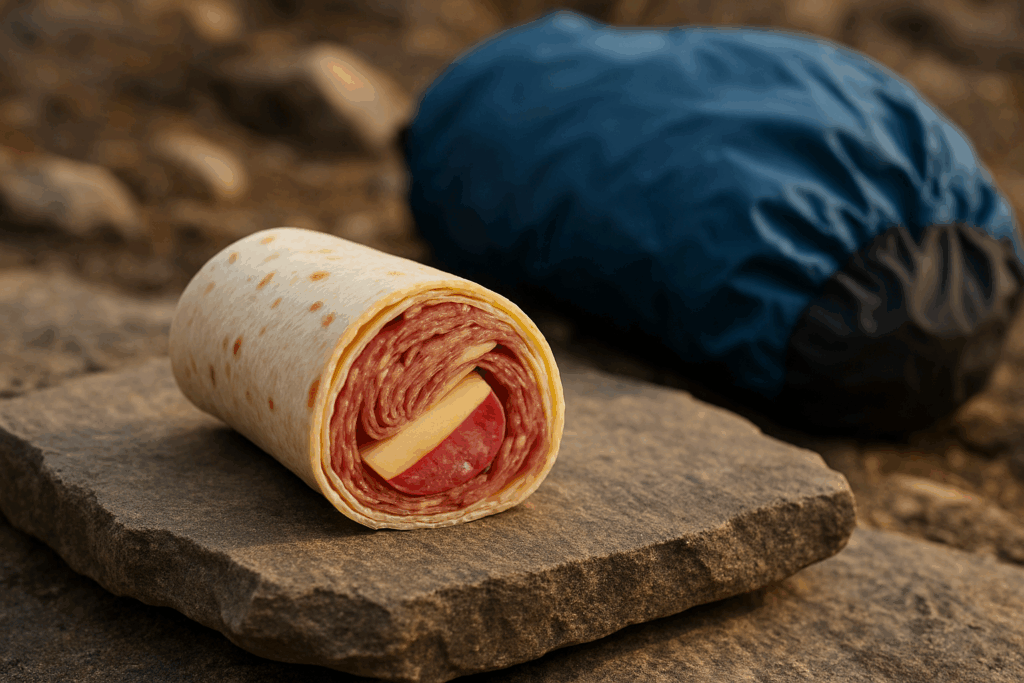
These ingredients are low-moisture, high-density, and won’t freeze into bricks like water-rich food.
💧 Meal Goal 2: Hydrate Without Lowering Core Temp
Drinking icy water at night can crash your internal temperature fast. But you still need water to digest dry no-cook food—and dehydration is a silent killer in desert overnights.
So eat your water. Or at least, hydrate with food that doesn’t demand gallons to digest.
🥒 3. Rehydrated Chia-Coconut Oat Mix
Make this before sundown: in a sealable container, mix:
- ½ cup rolled oats
- 1 tablespoon chia seeds
- 1 tablespoon dried coconut
- Handful of dried berries
- Just enough water to cover
Let it sit while you set up camp. By nightfall, it’s a pudding-like hydration meal that won’t spike blood sugar or make you thirsty. Chia absorbs 10x its weight in water and slowly releases it into your system.
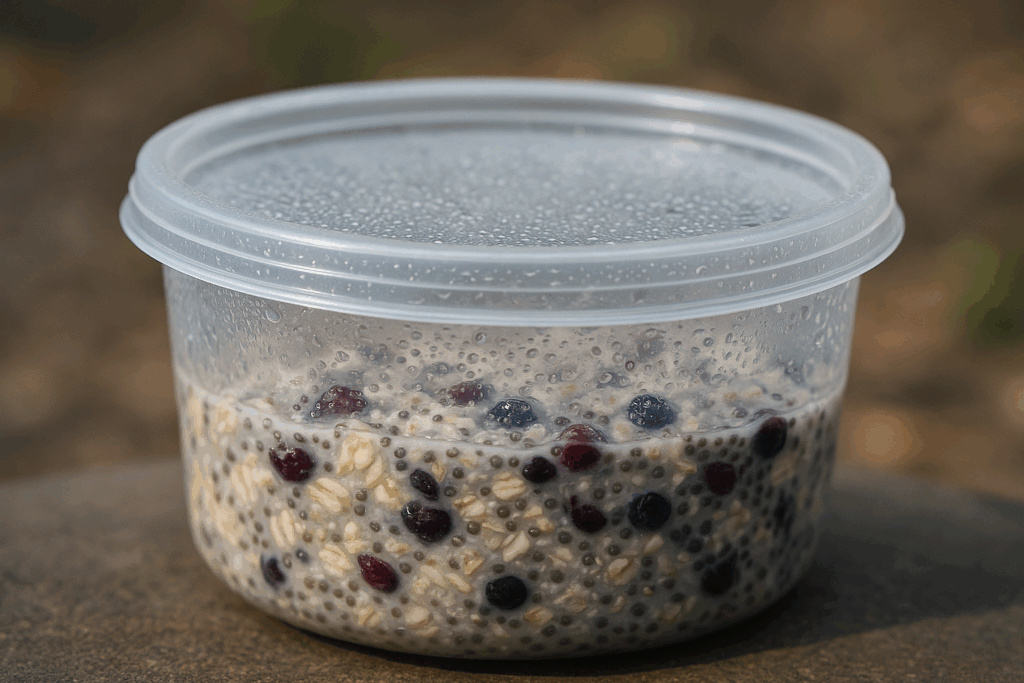
🧊 Meal Goal 3: Stay Cool While Staying Alive
It sounds backwards—you want to cool down in the desert night? Yes—just not too fast.
Here’s where “cool but warming” balance matters. If your body releases heat too quickly, you can trigger shivers and anxiety. Instead, eat foods that help you stay neutral.
🍌 4. Banana Chips + Cashew Trail Sprinkle
Bananas provide magnesium and B6, which calm the nervous system and help with thermal equilibrium. Cashews give you gentle fat, and a pinch of sea salt rounds out the electrolyte triangle.
Keep this mix in your tent pocket and snack on it slowly while winding down.
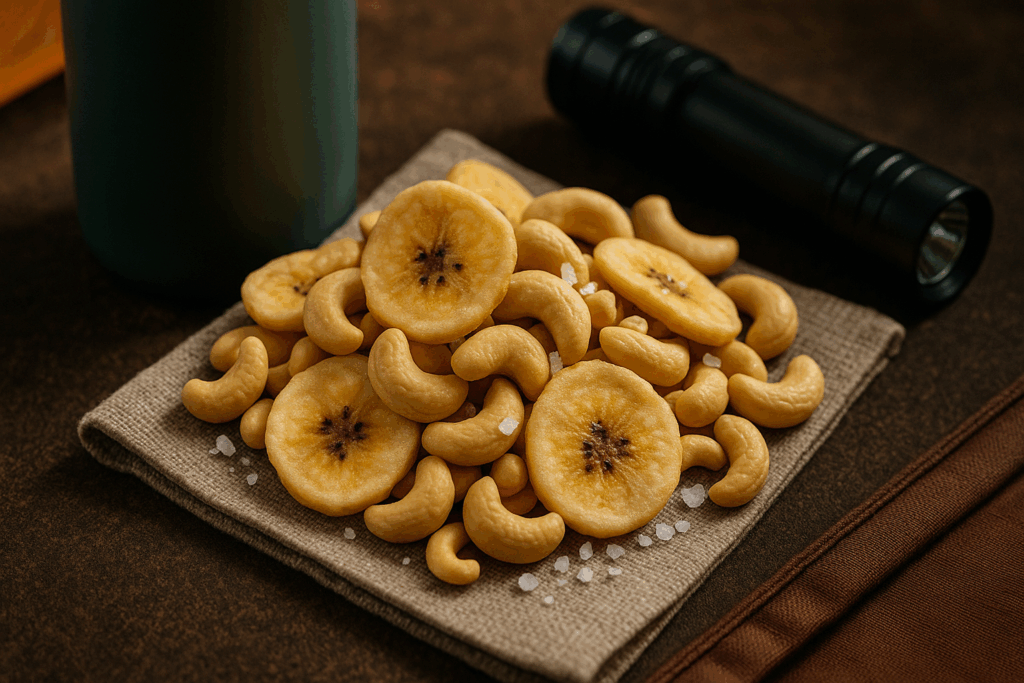
Note: Magnesium also helps prevent sleep cramps from a day of riding or hiking.
🧠 Meal Goal 4: Fuel Your Brain, Not Just Your Belly
One of the biggest dangers of desert camping isn’t cold—it’s decision fatigue from low blood sugar, especially when you’re too tired to think straight.
🍫 5. Date-Walnut-Cacao Balls
Before your trip, make compact energy balls with:
- 4 dates
- ½ cup walnuts
- 1 teaspoon raw cacao
- Pinch of salt
Mash, roll, refrigerate, and pack. These provide glucose for brain clarity, fat for slow energy, and magnesium for nerve function. Cacao even has natural mood-elevating effects—important when isolation sets in.
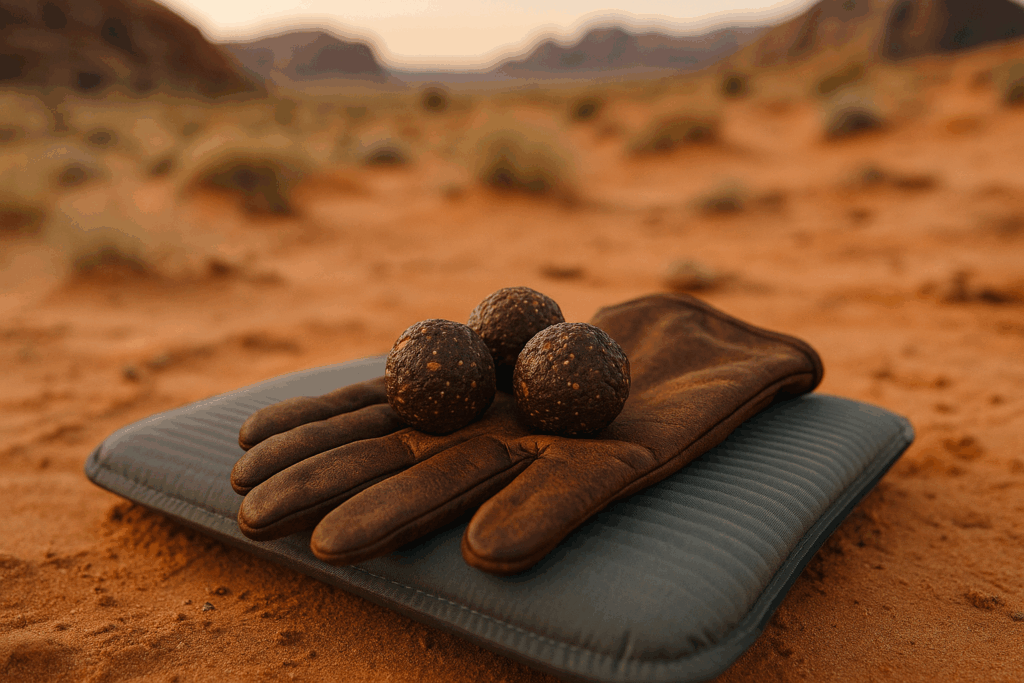
🛠️ Meal Goal 5: Eat With Gear, Not Tools
Desert dust ruins utensils fast, and washing dishes at night wastes water and body heat. So choose meals you can eat with gear or fingers.
- Use tortillas as edible plates.
- Cut cheese/salami with your multitool blade.
- Use a resealable pouch as a bowl and mouth-squeeze your meal.
- Carry 1 wide-mouth bottle for dry mix meals (like oats or couscous).
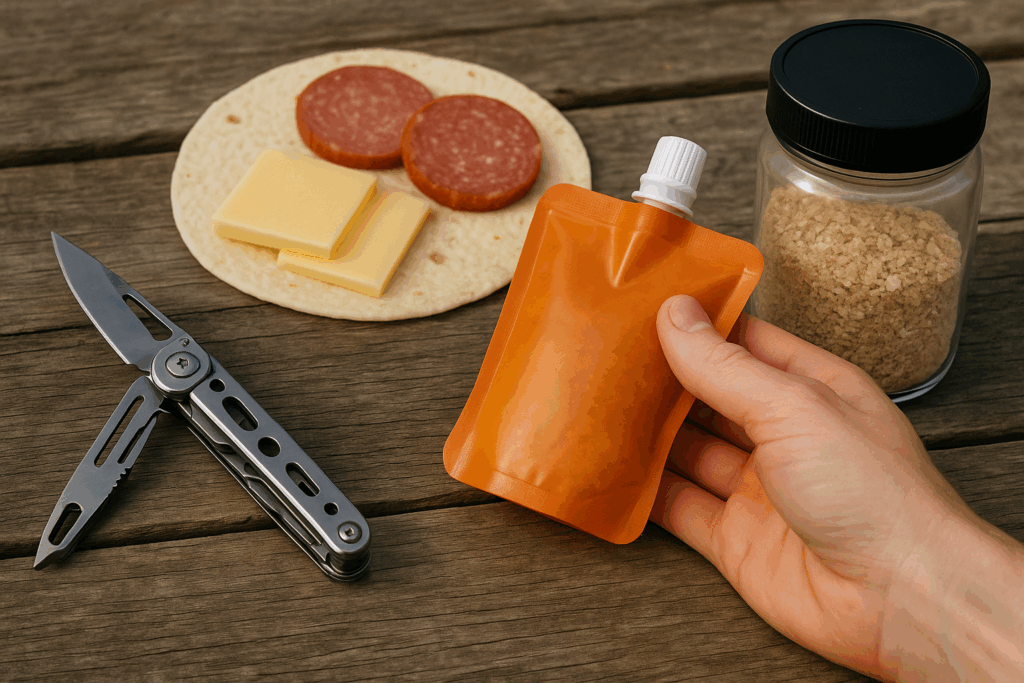
🌬️ Bonus Desert Night Hacks: Pairing Food With Survival
Some no-cook meals do more than feed you—they interact with your environment to regulate temperature.
🧦 Heated Meal Pouches Under Clothes
Eat one vacuum-packed meal warm from body heat. Then, save another sealed pouch (soup, curry, ghee rice) and tuck it between your inner layer and outer jacket while you sleep. The pouch will warm up from your body and can be eaten for breakfast. It also acts as a thermal buffer.
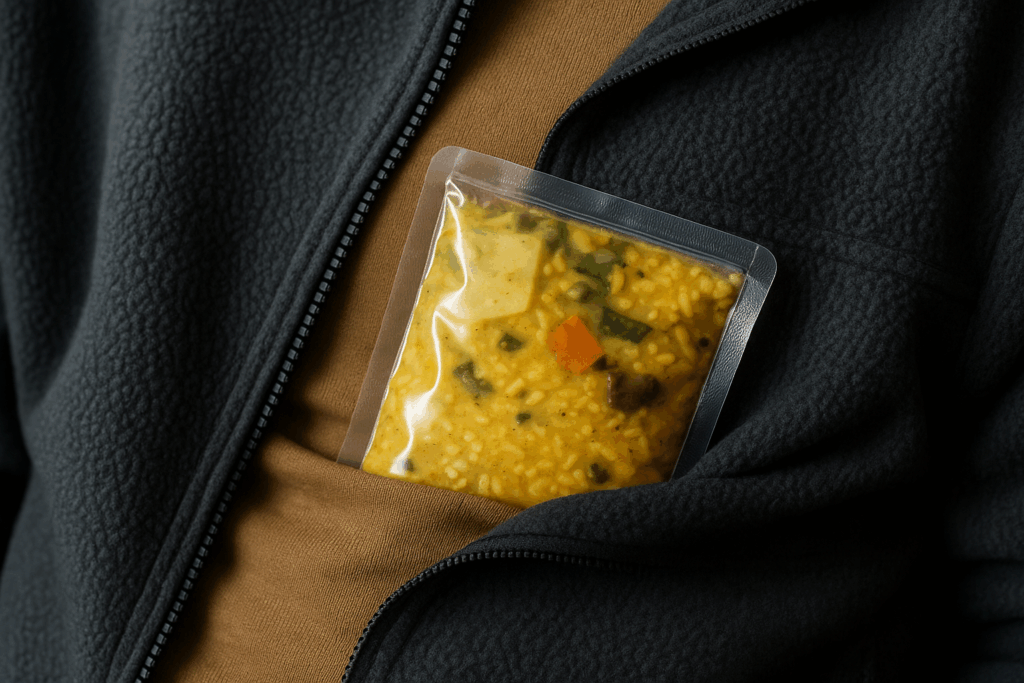
⛺ Final Thought: Eat to Survive, Not Just to Satisfy
In the desert, food is function. It’s not about comfort—it’s about staying alert, maintaining hydration, and controlling body temperature in an environment that swings from boiling to freezing in a few hours.
These no-cook meals aren’t just for convenience. They’re strategic survival tools built from fat, fiber, protein, and subtle hydration science. They’re designed to calm your system without shocking it, warm your core without overheating, and preserve energy for the next day’s trek.
You don’t need a stove to survive the desert. You need clarity, preparation, and the right foods at the right time.
